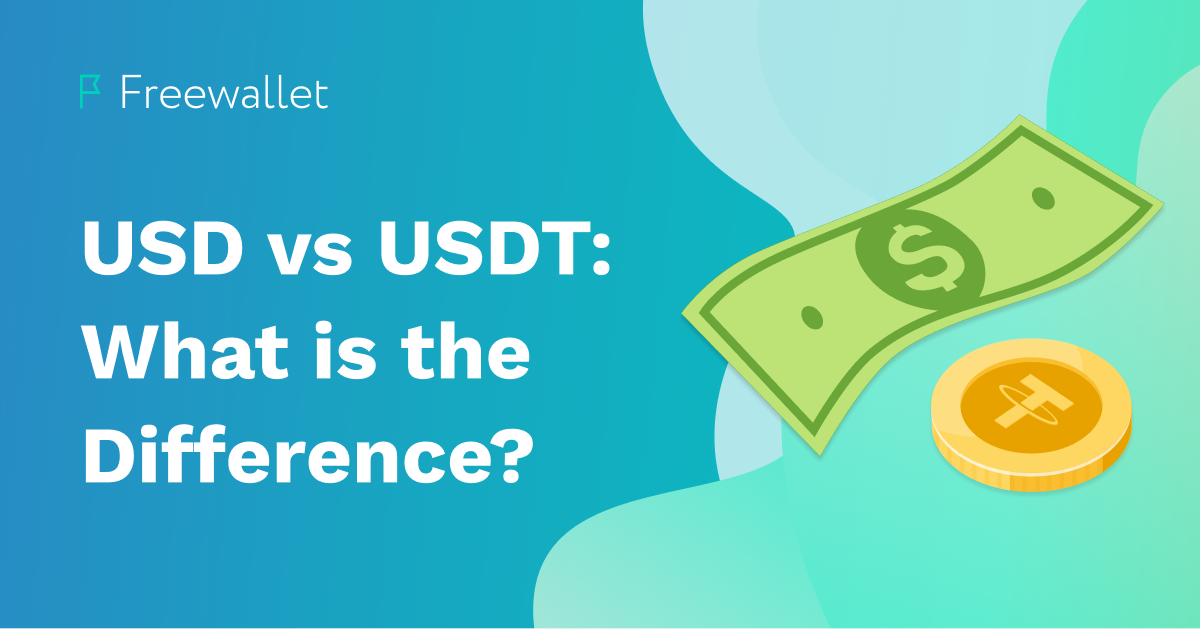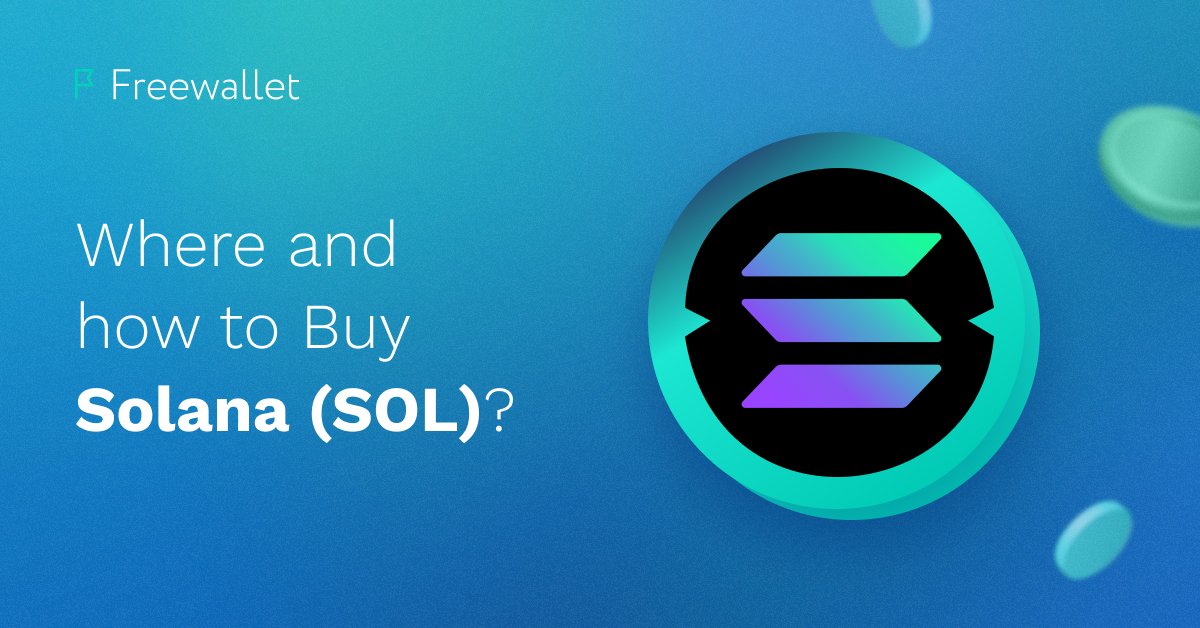
Stablecoins combine the relative value stability of fiat money with the benefits of cryptocurrencies, such as cross-border transactions, enhanced privacy, and access to the decentralized finance sector. How is it possible?
Stablecoins are cryptocurrencies whose value is pegged to the respective value of a specific fiat currency. Stablecoins achieve price parity with fiat currencies using different methods. Stablecoins were the response to the criticism concerning the high volatility of cryptocurrencies. As stablecoins have stable prices, they are the most convenient means of payment among cryptocurrencies.
Nowadays, numerous fiat currencies or other assets are associated with respective stablecoins. Many stablecoins are pegged to USD. The USD-pegged stablecoin with the highest market capitalization is Tether (aka USDT). In this article, we will compare it to the American dollar and see how much two assets have in common and in which situations one can be preferred to the other.
What is USD?
The United States dollar (or simply the American dollar or USD) is the only state currency of the USA. USD is a benchmark currency, meaning that it is used to measure the value of many other assets, goods, etc. Apart from the USA, several countries use USD as legal tender. People don’t use any other currency as frequently as the American dollar. Often USD is used unofficially in countries where the American dollar doesn’t have legal tender status. USD is the most stable currency in the world. It has a considerable influence on the global economy.
The Coinage Act established the United States dollar in 1792. Initially, the USD had a silver and golden equivalent. The first paper dollars saw the light of day in the times of the Civil War. In the 1860s, the government launched a legal tender called “United States Notes” and created the USD printing system. By 1913, the national banking network occurred, and the Federal Reserve system was designed.
Gradually, the connection between the USD value and gold grew weaker. In 1933, it became impossible to convert notes into gold. However, dollars were still backed by gold. However, in the following decades, the gold standard continued to decrease. At first, it was obligatory exclusively for cross-border transactions. However, by 1976, the American dollar was no longer officially associated with gold.
Although the US dollar is not backed by gold, it is the most traded currency in the world. Almost half of all settlements in the world involve US dollars. Euro is next to the USD. It is used in one-sixth of all cross-border trades.
The buying power of the modern US dollar is only around 3% of its buying power in the 18th century when it was first launched. Some believe the US dollar’s global domination becomes less superior due to the growth of the Euro’s and Chinese Yuan’s prominence. Nowadays, the USD’s leadership cannot be questioned, though. The USD is a preferred store of value currency all around the world. Over 30 fiat currencies are pegged to the USD.
What is USDT?
Tether (or USDT) is a USD-pegged stablecoin launched in 2014 by Tether Limited Inc. Ever since, Tether has been the most wanted stablecoin. USDT is among the top five cryptocurrencies in terms of market cap. Tether is affiliated with the Bitfinex exchange, as Finex Inc., the company behind Bitfinex, owns Tether Limited Inc.
It is supposed that 1 USDT has a value of 1 USD. To achieve this, the company claims to have a USD reserve, and every USDT unit is allegedly backed with one dollar. This info has yet to be officially confirmed, though. Tether Limited is under the authorities’ pressure for not being able to present an audit proving they have sufficient reserves. Nevertheless, for years, Tether had only one instance when its price dropped significantly. On 15 October 2018, USDT cheapened to a $0.88 level.
By 2022, the coin became compatible with ten protocols. Such versatility makes Tether an easy choice, even for those who prefer lesser-known blockchains. All the mainstream protocols are compatible with the coin, too. Such comprehensive coverage is one of the reasons behind the USDT’s success. In 2019, Tether even exceeded Bitcoin in terms of the trading volume.
What is The Difference Between USD and USDT?
So far, USD and USDT have been nearly equal in value. However, these assets are certainly not the same. Obviously, USDT is secondary to USD as it draws its value from the American dollar and won’t exist if the USD goes away. This connection is not mutual. The US dollar will stay unaffected if Tether disappears.
Another essential difference between the United States dollar and Tether is the legal status and trustworthiness. As the USD is the strongest of all fiat currencies, the prime preferred currency in the world, and is legal tender on many territories, it is significantly more reliable than Tether. And if the US government screws up and makes the dollar price go down, Tether’s price will go down, too. That’s something that won’t happen in the same circumstances to crypto coins, not pegged to the American dollar, for instance, Bitcoin.
What are the Tether benefits? Sending money abroad can be easier with Tether, as no one cannot stop you from sending or receiving cryptocurrencies. Transaction time and fee don’t depend on the sender and receiver locations. However, you may face limitations and additional costs if you need to convert Tether to fiat money. However, the bank won’t freeze your USDT if you send a considerable amount abroad. You are in full possession of your money when you use Tether.
Much more merchants accept USD than Tether. Of this factor, having dollars is more practical. More than that, many fiat money payment systems can automatically convert your dollars into other fiat currencies. It makes USD a key to most online goods. USDT can’t boast anything like this. But as much as USD can be called a key to most online (and offline) markets, Tether is a key to the DeFi sector. DeFi platforms are the no-go for fiat currencies. That’s where Tether becomes important and dominant. Getting some USDT can be helpful if you want to make money via staking, liquidity mining, or other DeFi-related activities.
How to Convert USDT to USD?
Now, we will speak about how to convert USDT to USD and vice versa. The task of turning your Tether into USD can be solved in several ways. First, you can ask someone you know and trust to give you some dollars in exchange for USDT. That can be the safest and easiest way to do so. If you don’t have such a person at the right moment, you should visit one of the crypto exchanges that allow you to withdraw fiat money. Make sure that your residency and other parameters are not restricting you from doing so.
One of the most popular ways to convert USDT into USD is through the P2P platform on a crypto exchange. There you can find people eager to buy some USDT in exchange for dollars. You can pick the one with the supported payment method that fits you the best and make a deal. Usually, it doesn’t take much time. However, be ready to verify your identity before using such a platform. P2P platforms are pretty safe to use as the exchange serves as an escrow, and you don’t have to release your money until you get confirmation that your money has hit your account.
Now, a couple of words on the conversion of USD into USDT. As long as you are reading this article on Freewallet, we must tell you that you can exchange your dollars for Tether right there. Freewallet supports a Buy Crypto feature. Using it, you can exchange your fiat money for cryptocurrencies in a couple of clicks. USD and USDT are supported. So feel free to exchange your money right here, on Freewallet. The transaction will be safe and quick.
Conclusion
As you can see, although USD and USDT are nearly identical in terms of value, these assets have crucial differences, and they occupy different positions in the currencies hierarchy. As of 2022, the USD vs. USDT battle is easily won by the American dollar. However, Tether is a crucial and convenient currency if you want to enter the DeFi market. That’s something a dollar can’t help you with. Let’s see what happens next!
Related
Stay tuned
Subscribe for weekly updates from our blog. Promise you will not get emails any more often.
Most Popular
New Posts
Stay tuned
Subscribe for weekly updates from our blog. Promise you will not get emails any more often.





